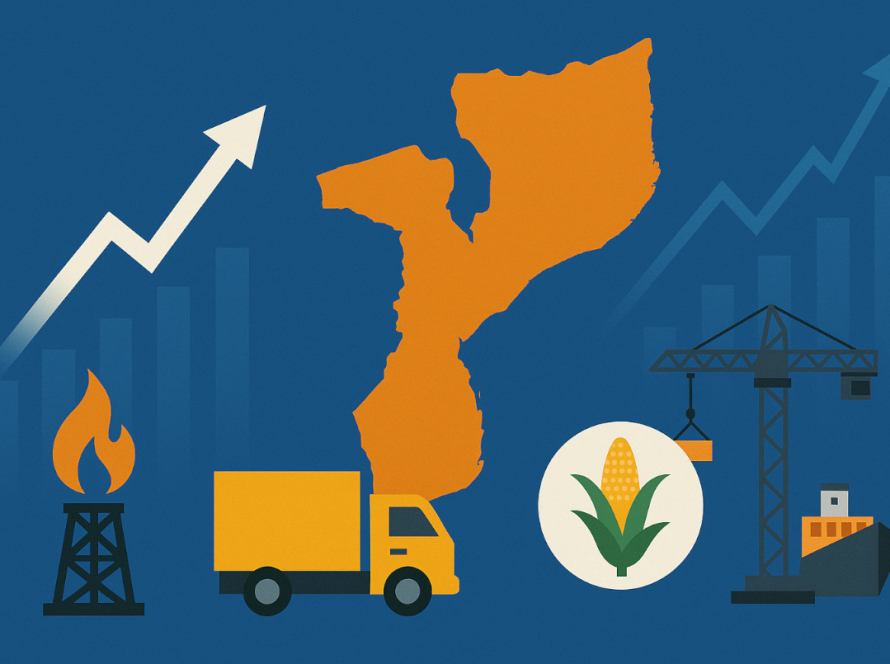The issue of consumption, in the context of the Mozambican market, has never been simply about satisfying needs: it is, above all, a continuous exercise in adaptation. The Mozambican consumer adjusts to the rising prices of basic necessities, the fluctuating currency, and the pace of the economy, which sometimes promises growth and sometimes stagnate. Today , talking about consumption in Mozambique means talking about cautious choices, but also about constantly changing aspirations and a society learning to consume in new ways. And the question that arises is: where are these changes taking us?
The profile of the Mozambican consumer
It’s undeniable that Mozambican consumers are no longer the same as they were ten years ago. While price once dominated all decisions, it now shares its place with other factors. Quality is beginning to be valued, especially in food and services; cultural identity has gained traction, paving the way for a growing awareness of consuming local products.
Urban youth, more connected, informed, and cosmopolitan, are setting many trends today. They are more open to e- commerce , mobile banking , and the consumption of experiences, not just material goods. Meanwhile, the emerging middle class, especially in cities, seeks comfort and convenience , driving demand for private healthcare, quality education, and a variety of leisure activities.
However, it’s important to remember that approximately 61% of the Mozambican population still lives in rural areas, dependent on agriculture, which, although it employs the majority, has a low share of GDP. So how can we balance these two distinct consumption realities?
Main consumer sectors in Mozambique
One way to understand this balance is to observe how it manifests itself in the sectors that most shape the daily lives of Mozambican consumers:
Food: Food takes a huge toll on family budgets, and food inflation weakens choices. At the same time, it opens up space for innovation in agribusiness and the processing of local products. In cities, demand is twofold: on the one hand, people seek fresh, local foods, such as vegetables, seafood, and meat; on the other, they seek processed and imported products, especially from South Africa. The expansion of supermarkets and department stores, including foreign chains, reveals a changing market. Today’s shelves offer everything from Indian textiles and school supplies, Chinese electronics , to Portuguese food and beverages.
Technology: The mobile phone has become simultaneously a wallet, a store, and a place to socialize. Mobile payment apps like M-Pesa and E-Mola are entrenched, with usage becoming increasingly prevalent. Other apps, geared toward gaming or physical activity , are also gaining traction. At the same time, e- commerce is growing steadily, with a projected annual growth rate of 8.5% through 2029, according to Statista .
Clothing and lifestyle : This sector reflects an interesting duality: on the one hand, imported brands continue to carry status; on the other, national brands offer identity and pride. Although still in their infancy, these brands are beginning to win over employed and informed youth. Still, it’s impossible to ignore the omnipresence of imported secondhand clothing, affordable and dominant, although it coexists with the demand for original international brands.
Services: In services, there is an increasingly notable demand for gyms, clinics, pharmacies, private schools, restaurants, and resorts. It’s not just about spending, but also about investing in well-being. Private healthcare and education, including insurance, are a priority for the middle class, even in a context of limited income. This creates an internal consumption dynamic that offers concrete opportunities for attentive investors. And these dynamics, when analyzed together, allow us to foresee broader trends that are already beginning to reshape the future of consumption in the country.
Prospects for the future
If we observe closely, emerging trends reveal a future that is already here. Digitization is irreversible: mobile payments are routine, and online shopping is beginning to gain more confidence. Sustainability is emerging as a value to consider, especially among young urbanites, even in a market with reduced purchasing power, which can become an opportunity for innovative brands. The issue of informality , which continues to dominate commerce, is already showing signs of transition, especially in sectors linked to retail and technology. And, perhaps more transformative, changes are also beginning to emerge in rural and peri-urban areas. Services previously restricted to cities are beginning to expand to these areas, reducing asymmetries and expanding consumption potential. Finally, there is a silent but notable movement : the appreciation of ” Made in Mozambique” products , which restores a dimension of collective identity to consumption .
Obstacles and promises
It’s true that challenges remain, but it wouldn’t be fair to talk about consumption in Mozambique without recognizing the opportunities. Agribusiness offers vast horizons; digital penetration opens markets; innovation in retail can bring producers and consumers closer together in unprecedented ways. The tourism sector, housing, and even renewable energy are open doors to creating new ways of consuming and living. The question, then, is not whether there will be growth, but who will be prepared to lead it .
With a predominantly young and urbanizing population, the next three to five years are expected to see an increase in demand for digital solutions and experiences related to leisure, fashion, and technology. Brands that successfully combine convenience, fair pricing, innovation, and cultural pride will win the trust of a country undergoing constant transformation.




